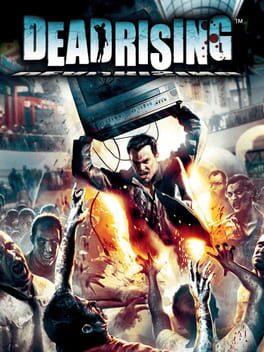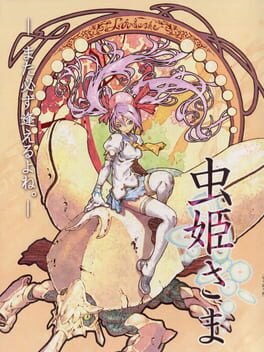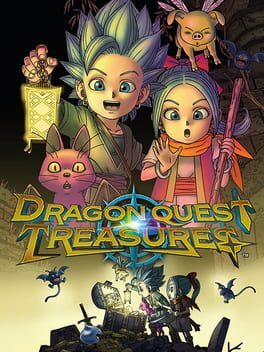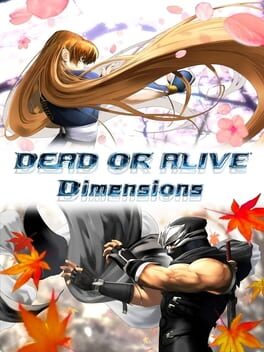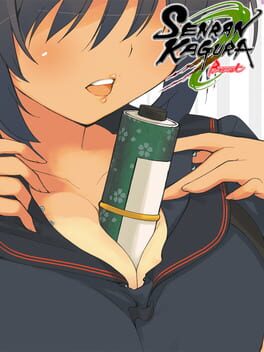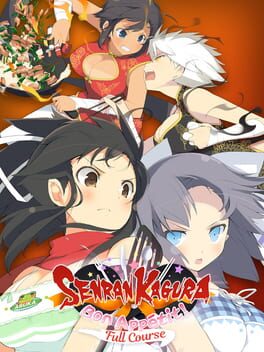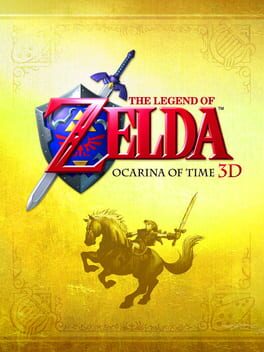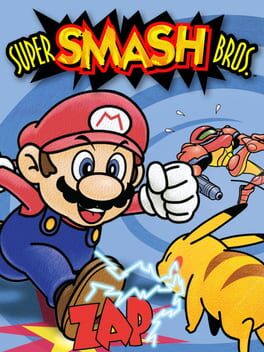heartisblazing
178 Reviews liked by heartisblazing
Pizza Tower
2023
Dead Rising
2006
Lost in Vivo
2018
Mushihimesama
2004
I'm pretty selective with my ratings, I feel. Sure, I make myself rather predictable by typically sticking within the 5-7 range, but it's not like I'm throwing out high or low scores out the wazoo. Generally, I focus on the speculation and intake process of what people have been saying about something, and sort my expectations around those, so usually nothing really strikes me out or base myself on gut feeling when I check them out. Shmups aren't really my forte, but I do have experience with a fair number of them to know the dos and don'ts, plus I like throwing myself at the mercy of danmaku "go big or go home" escalations, so I was expecting to at least casually enjoy this.
The first boss reinforced my initial outset since, from the get-go, it already establishes everything CAVE wants to bedazzle you with. Majority of its patterns and enemy positions are simple and easy to fixate on, but the application of these Koujuu buggers (literally!) within their speed is what sets this apart. Spread shots, buckshots, rollers, overlays, if you can name and think of it, chances are Akira Wakabayashi and Co. have thought of it. A lot of the characteristics expressed from these bugs also shine due to Akira focusing strongly on the entomological aspect of these creatures to relay onto the artists, with director and programmer Tsuneki Ikeda also noting that it was a return to roots foundation, along with utilizing this as a benchmark for new hardware. Obviously there's some Nausicaa-distilled vibes lingering beneath and on top of the naturalistic world, but the differing aspects of the forests within Mushi's world also tend to give rise into other foundations as you go along, marking your progress as either the blues of Stage 4 or the washed greens of Stage 2 to name some examples, establishing more of an interpersonal relationship with the player and the bullet mechanics. This also doubles up on the repeat learning of the reliable M Shot, the wide but meek W Shot, or the strict yet powerful S Shot. It takes two to tango after all, even if the denizens prefer blasting you away.
To go further about the remarks Ikeda has given, as well as deepen my point about simplicity thrusting itself unto elegance and sensation, two details he's revealed before are about the stronger focus on the characters Reco and Aki, alongside the principles of establishing the high of navigating around these bullets in the first place. That said, I'm choosing to forgo an in-depth look into the mechanical side of the game, since to reiterate I'm pretty green with shmups and also cause I'm still aiming to improve myself with this, and not to mention I'm more focused on the character angle. Shmups tend to not indulge on this aspect of game design, which is fair, but the way Mushi goes about it is very intriguing. Even disregarding the fervent chaos and hostile bombarding, art CGs shown upon level completion visualize the story between Reco's past venture within a forest, and Aki's help in succoring her life via a bracelet embodying crystalized forces of the Koujuu. Years have past, climate has worsened for her village, and its through her flight with the help of a beetle named Kiniro that she sets off to ascertain what has wrought upon them, subtly embellishing and engrossing herself within this area. I wouldn't classify it as Man Vs. Nature as it first appears, despite the parasitic symbiosis between the humanoids inhabiting the area and how the creatures react to them, but there's a subtext feeling of melancholy. The way Reco learns and overcomes these sorts of ordeals and predicaments within the setting is akin to we, the players, adapt and recognize all these obstacles. In a way, it's fitting the True Final Boss is Like That to be climax of both of these themes, even if the true reason is because they just wanted to fuck around with your expectations and play.
I always figured I'd like Mushihimesama, but there's a lot of special somethins within this gem of an amber-colored set. I've done Arrange, I've dabbled with Maniac and Ultra, and even partook in trying out Ver 1.5 as well, all of which are worth exploring. Related to that, the compositions provided by Manabu Namiki and Masaharu Iwata are top-to-bottom bangers. I already went into enough lengths in justifying my High IQ reading of a simple plot, not to mention I already went on-and-on about the connection and design workings between the player and the system, so I'll just go over my favorite tracks of this: Requiem Of The Sky, Like A Night Of Falling Stars, Levi-Sense, really I just recommend sitting down and soaking it all in regardless of playing the game or for casual listening. We talkin S-Tier OST material, be it the original or various arrangements made for the other modes, and I already went the extra yard and put the OST onto my phone to listen to whenever. This one's for my rotational books for sure.
The first boss reinforced my initial outset since, from the get-go, it already establishes everything CAVE wants to bedazzle you with. Majority of its patterns and enemy positions are simple and easy to fixate on, but the application of these Koujuu buggers (literally!) within their speed is what sets this apart. Spread shots, buckshots, rollers, overlays, if you can name and think of it, chances are Akira Wakabayashi and Co. have thought of it. A lot of the characteristics expressed from these bugs also shine due to Akira focusing strongly on the entomological aspect of these creatures to relay onto the artists, with director and programmer Tsuneki Ikeda also noting that it was a return to roots foundation, along with utilizing this as a benchmark for new hardware. Obviously there's some Nausicaa-distilled vibes lingering beneath and on top of the naturalistic world, but the differing aspects of the forests within Mushi's world also tend to give rise into other foundations as you go along, marking your progress as either the blues of Stage 4 or the washed greens of Stage 2 to name some examples, establishing more of an interpersonal relationship with the player and the bullet mechanics. This also doubles up on the repeat learning of the reliable M Shot, the wide but meek W Shot, or the strict yet powerful S Shot. It takes two to tango after all, even if the denizens prefer blasting you away.
To go further about the remarks Ikeda has given, as well as deepen my point about simplicity thrusting itself unto elegance and sensation, two details he's revealed before are about the stronger focus on the characters Reco and Aki, alongside the principles of establishing the high of navigating around these bullets in the first place. That said, I'm choosing to forgo an in-depth look into the mechanical side of the game, since to reiterate I'm pretty green with shmups and also cause I'm still aiming to improve myself with this, and not to mention I'm more focused on the character angle. Shmups tend to not indulge on this aspect of game design, which is fair, but the way Mushi goes about it is very intriguing. Even disregarding the fervent chaos and hostile bombarding, art CGs shown upon level completion visualize the story between Reco's past venture within a forest, and Aki's help in succoring her life via a bracelet embodying crystalized forces of the Koujuu. Years have past, climate has worsened for her village, and its through her flight with the help of a beetle named Kiniro that she sets off to ascertain what has wrought upon them, subtly embellishing and engrossing herself within this area. I wouldn't classify it as Man Vs. Nature as it first appears, despite the parasitic symbiosis between the humanoids inhabiting the area and how the creatures react to them, but there's a subtext feeling of melancholy. The way Reco learns and overcomes these sorts of ordeals and predicaments within the setting is akin to we, the players, adapt and recognize all these obstacles. In a way, it's fitting the True Final Boss is Like That to be climax of both of these themes, even if the true reason is because they just wanted to fuck around with your expectations and play.
I always figured I'd like Mushihimesama, but there's a lot of special somethins within this gem of an amber-colored set. I've done Arrange, I've dabbled with Maniac and Ultra, and even partook in trying out Ver 1.5 as well, all of which are worth exploring. Related to that, the compositions provided by Manabu Namiki and Masaharu Iwata are top-to-bottom bangers. I already went into enough lengths in justifying my High IQ reading of a simple plot, not to mention I already went on-and-on about the connection and design workings between the player and the system, so I'll just go over my favorite tracks of this: Requiem Of The Sky, Like A Night Of Falling Stars, Levi-Sense, really I just recommend sitting down and soaking it all in regardless of playing the game or for casual listening. We talkin S-Tier OST material, be it the original or various arrangements made for the other modes, and I already went the extra yard and put the OST onto my phone to listen to whenever. This one's for my rotational books for sure.
Resident Evil 4
2011
Probably the purest example of what "arcade" as an approach to gameplay actually means. It doesn't only pack as much of the experience with new twists, mechanics, ideas, level dynamics, enemies, set pieces, and approaches to its pacing; but also does it the quickest, I don't think a single cutscene lasts more than 3 or 4 minutes, you can even skip all the small hints to tell you a change in the environment, such is the commitment to pure gameplay.
And at that it still doesn't deviate from what Resident Evil is, the resource management, clean screen, focus on strategic combat, environmental efficiency and solid art direction (even if drab at times).
If anything I'd say the one thing it doesn't take enough from the other games is the way it handles saving, checkpoints and even typewriters are so common there's barely any stakes in failure unless you're going for some self-imposed challenge; takes away that element of tension that made you consider your actions. Arcade without the coins and Resident Evil without limited saving, kind of a walk in the park if I'm honest.
And at that it still doesn't deviate from what Resident Evil is, the resource management, clean screen, focus on strategic combat, environmental efficiency and solid art direction (even if drab at times).
If anything I'd say the one thing it doesn't take enough from the other games is the way it handles saving, checkpoints and even typewriters are so common there's barely any stakes in failure unless you're going for some self-imposed challenge; takes away that element of tension that made you consider your actions. Arcade without the coins and Resident Evil without limited saving, kind of a walk in the park if I'm honest.
A mild improvement from Touhou 2, giving the player the ability to actually slow their movement as well as having attack patterns that feel like they embody the flashier nature that the series would only further lean into as the games went on. The pretty intense slowdown that this occasionally has is also pretty helpful in making this one of the easier games in the series, feels nice when you're bad at these sorts of games to have a bit more time than it might first seem. I'd like this even more if not for a few too many moments of frustrating bullet visibility in the later levels along with the fact that there is a lot of time that feels a bit like dead air in between boss fights, but even so, I like this one quite a bit.
My initial thoughts of this game were that if was poorly designed (graphically it is vastly worse than what 11 looks like) and had unfun combat. After getting past the tutorial I did actually start enjoying it a lot since finding thousands of small references to past games was fun, I was able to really start exploring, and I realized combat wasn't actually important outside of boss fights since most similar level enemies are easy to beat in a few seconds. Treasure hunting is the main attraction and it is fun when it comes to that but there were still flaws like needing to backtrack often. The repetitiveness and the way it was designed to be played just a little bit daily hold it back. It made it hard for me to actually want to reach the end. Overall it is a fairly nice spin off that is fun for a while but not something that can really hook most people.
I have never been a huge fan of Dead or Alive outside the characters. The fighting system is convoluted, overcomplicated, and not ever explained very well. Dimensions break this barrier with a great Chronicle story mode that introduces these complicated techniques little by little so you can absorb it and it works great. The story mode is entertaining but nothing to write home about. You play as various characters trying to stop Alpha-152 which is Kasumi’s evil clone. DOATEC is trying to use this to destroy the ninja clan Mugen Tenshin.
The fighting system actually is complicated but after the story mode, you can actually use it. There are the usual combos of kick and punches, but you can juggle opponents and stun them in a critical state. You can throw and hold opponents while holding is kind of a counterattack you can actually counter a counter in this game. If someone counters your attack with a hold you can counter back or get out of the hold. Understanding how to do this takes some getting used to but it adds some strategy to online fights. You can also do a super stun which is called OHing an opponent and this means they can’t counter. There are also special stances that the characters go into which can be used to strategically add extra combos without the opponent knowing. You can also delay attacks in combos to kind of trick the other player in thinking you’re done so they stop blocking.
The fighting system is fluid and smooth with great animations and controls, but my favorite part is that the combos are listed on the bottom screen so you can tap them or just use them as a quick combo list. This is really handy and actually makes playing the game more enjoyable so you aren’t constantly pausing the game to remember a combo. On top of this, you can now tag team which is fun and adds some great combos to the fray. I liked the extra modes such as tag team, and infinite mode, and of course the showcase mode where you unlock figurines to take pictures in 3D.
There are a lot of costumes to unlock to make the females look sexier or the males look cooler and StreetPass and SpotPass are wonderfully integrated into the system. I’ll have my 3DS in my pocket all day when going out then come home and have a few challengers ready to fight online that I passed when going out. I might even drive by a few SpotPass areas and come back with some downloaded costumes. Dimensions really utilize these features and I have a blast using them.
With all that said the 3D effects are amazing and really show off the features of the system in this way, but overall the graphics are smooth and crisp and look very detailed. I highly recommend Dimensions because it’s the best fighting game on the system right now.
The fighting system actually is complicated but after the story mode, you can actually use it. There are the usual combos of kick and punches, but you can juggle opponents and stun them in a critical state. You can throw and hold opponents while holding is kind of a counterattack you can actually counter a counter in this game. If someone counters your attack with a hold you can counter back or get out of the hold. Understanding how to do this takes some getting used to but it adds some strategy to online fights. You can also do a super stun which is called OHing an opponent and this means they can’t counter. There are also special stances that the characters go into which can be used to strategically add extra combos without the opponent knowing. You can also delay attacks in combos to kind of trick the other player in thinking you’re done so they stop blocking.
The fighting system is fluid and smooth with great animations and controls, but my favorite part is that the combos are listed on the bottom screen so you can tap them or just use them as a quick combo list. This is really handy and actually makes playing the game more enjoyable so you aren’t constantly pausing the game to remember a combo. On top of this, you can now tag team which is fun and adds some great combos to the fray. I liked the extra modes such as tag team, and infinite mode, and of course the showcase mode where you unlock figurines to take pictures in 3D.
There are a lot of costumes to unlock to make the females look sexier or the males look cooler and StreetPass and SpotPass are wonderfully integrated into the system. I’ll have my 3DS in my pocket all day when going out then come home and have a few challengers ready to fight online that I passed when going out. I might even drive by a few SpotPass areas and come back with some downloaded costumes. Dimensions really utilize these features and I have a blast using them.
With all that said the 3D effects are amazing and really show off the features of the system in this way, but overall the graphics are smooth and crisp and look very detailed. I highly recommend Dimensions because it’s the best fighting game on the system right now.
I honestly bought this as a novelty. Early 3DS games are a weird breed, with a bunch of third-party titles that simply existed to make the system look like a good investment while Nintendo scrambled to make some 1st party games that were worth a damn. I will give credit where it's due though; The ads for this game put the DOA franchise in the back of my middle-schooler mind, which lead to me picking up a copy several years later. Honestly? It's pretty good.
The story mode is a retelling of the plot that takes place over the course of DOA1-4. It's barely comprehensible to me (something about experiments to create superhumans, and a very angry ninja clan), but it was still a fun experience. The presentation in the cutscenes varies wildly, however. Some of them are FMVs, some are fully animated in-engine, and most of them are just watching the camera pan around inanimate character models. The bottom screen also sometimes gives extra details on certain topics when they come up in the cutscenes. It's useful for catching up on lore, but some of them are just descriptions of basic concepts (why are you telling me what "commodities" are?).
The real reason I enjoyed the story mode was its integrated tutorials. Every few missions or so, the game will give you a hands-on tutorial that teaches you one of the many dense mechanics of DOA. The battles that follow often pit you against opponents who will use tactics that favor using the tech you just learned, which is really cool. The game will also rarely slow time in the middle of battle, and give you a QTE command that can help turn the tide against your opponent. I think elements like these go a long way towards easing new players into the frantic pace of DOA's combat.
The combat itself is standard DOA fare, just condensed onto the 3DS. I will say that you SHOULD NOT play this game in 3D. The game runs at amostly smooth 60 FPS when the 3D is off, but caps at 30 when the 3D is on. It really isn't worth it. This game also happens to contain the one redeeming quality of Metroid: Other M within it. The area where you fight Ridley makes for a pretty sick fighting arena.
Overall, DOA: Dimensions makes for a good anniversary title, and the only portable rendition of pre-DOA5 combat. I personally think that the accessibility of the story mode could make this game a very appealing entry point for the DOA franchise as a whole, but I don't think it holds much value overall. Still a good time though.
The story mode is a retelling of the plot that takes place over the course of DOA1-4. It's barely comprehensible to me (something about experiments to create superhumans, and a very angry ninja clan), but it was still a fun experience. The presentation in the cutscenes varies wildly, however. Some of them are FMVs, some are fully animated in-engine, and most of them are just watching the camera pan around inanimate character models. The bottom screen also sometimes gives extra details on certain topics when they come up in the cutscenes. It's useful for catching up on lore, but some of them are just descriptions of basic concepts (why are you telling me what "commodities" are?).
The real reason I enjoyed the story mode was its integrated tutorials. Every few missions or so, the game will give you a hands-on tutorial that teaches you one of the many dense mechanics of DOA. The battles that follow often pit you against opponents who will use tactics that favor using the tech you just learned, which is really cool. The game will also rarely slow time in the middle of battle, and give you a QTE command that can help turn the tide against your opponent. I think elements like these go a long way towards easing new players into the frantic pace of DOA's combat.
The combat itself is standard DOA fare, just condensed onto the 3DS. I will say that you SHOULD NOT play this game in 3D. The game runs at a
Overall, DOA: Dimensions makes for a good anniversary title, and the only portable rendition of pre-DOA5 combat. I personally think that the accessibility of the story mode could make this game a very appealing entry point for the DOA franchise as a whole, but I don't think it holds much value overall. Still a good time though.
Even with Smash 4 and Ultimate being released. This game feels like the most complete Smash has ever been. With an amazing roster, decent Adventure Mode, lots of trophies to collect, and even game demos, this game has it all. The game can be somewhat slow and tripping is annoying, but for non-competitive players this is only a very minor complaint. With everything I listed above, the many fond memories I have of this Smash, and the best version of Final Destination, Super Smash Bros Brawl is an absolute must-play!
Senran Kagura Burst
2012
The moment I saw Katsuragi, I just knew I had to play this game and the whole series. The combat can get repetitve but racking up high combos is fun and satisfying. While the story is rather simple on both sides, it has a good ending and is probably the best game in the series in my opinion. If you're looking for a fun Warriors clone or beat em up on the 3ds, then this is a good choice even if you don't care too much for fanservice.
A lot of the songs in this game are pretty forgettable, but mixed in are a few bangers I still listen to from time to time. The game itself is a decent rhythm game and I had a fun time playing through all of the characters' stories. Besides the average soundtrack, my only other criticism is that the platinum trophy for this game was an absolute grind that I don't miss at all.
The best version of the game regarded as one of the best games of all-time. The enhanced graphics bring more life in the games visuals and make it more beautiful. The 3d is also pretty impressive in this game too. It also adds Master Quest from the GameCube version that adds more longevity to the game and a good challenge and a boss challenge mode for those who might want to fight the bosses again. Not only was this the 3ds's first killer app, but also the definitive version of a fantastic game that anybody who has ever touched a controller should play.
Super Smash Bros.
1999
The first game in a series that would become a massive hit for Nintendo. While it doesn't have a bunch of content, its a good amount for a series that Nintendo was skeptical about. Even with only 12 characters and 9 stages there is still a lot of fun to be had with playing this game whether it be with CPUs or messing around with friends.

